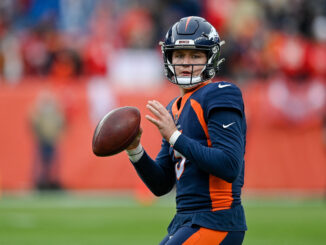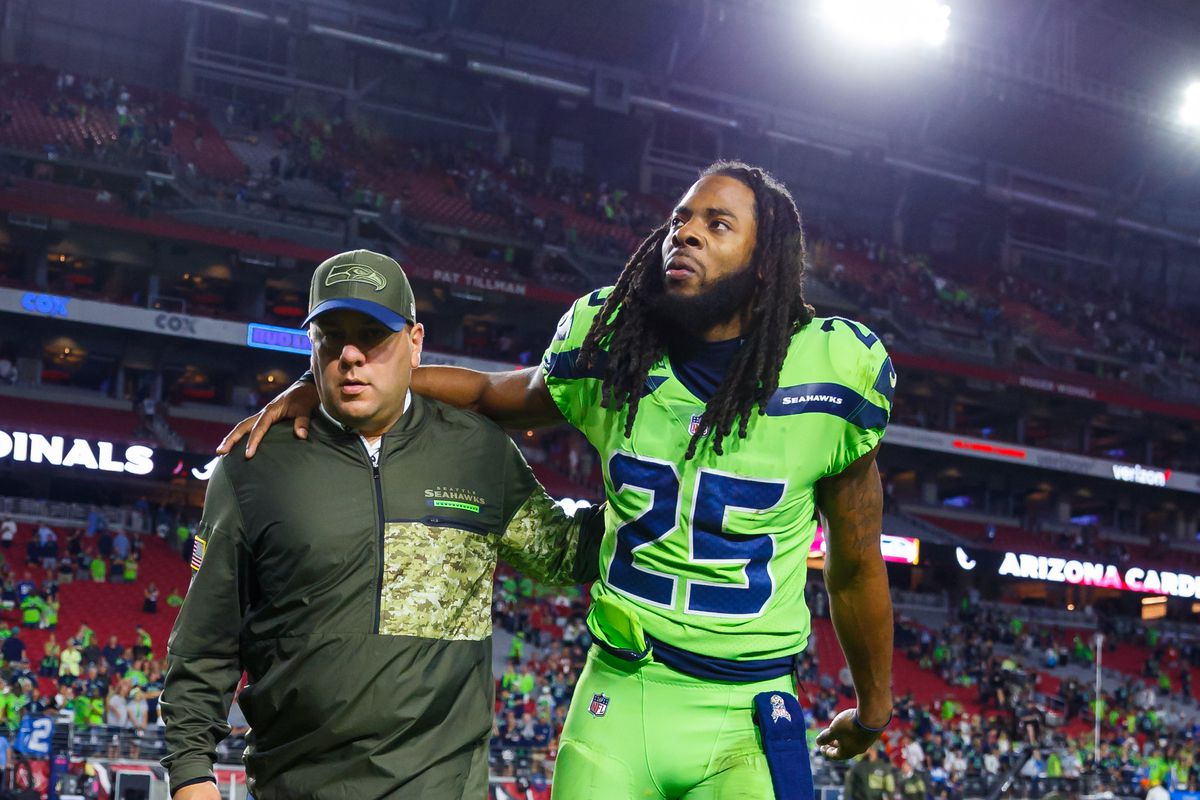
Through two games into the 2017 NFL season, the Seattle Seahawks’ offense has put the league on notice: We can’t run block. Unless your name is Chris Carson and it’s late in the game. Otherwise, sorry.
What first appeared as a sidebar concern in the opening weekend loss (9–17) to the Green Bay Packers because the Seahawks’ pass protection was so glaringly dangerous to Russell Wilson’s health, their paltry week one running back output of 53 yards on 15 attempts didn’t make headlines.
After week two’s similar output, it is the headline. All hopes for breaking the Seahawks out of their offensive funk begin with rookie Chris Carson, a seventh-round near afterthought draft pick, after an offseason of acquiring and rehabilitating supposed front-line talent.
Yes, Carson managed 93 yards on the ground in the Seahawks’ meh win over the visiting San Francisco 49ers last Sunday. Not too shabby. But it took him 20 attempts (4.65 YPC) to get those yards. Against a punchless offense like the 49ers’ that’s good enough. It’s not good enough for a team with playoff aspirations — particularly when the rest of the offense isn’t doing any better.
Juke box heroics
But is it up to Carson to lift the offense? Eddie Lacy, forced to run sideways on each of his five attempts against the Packers, was fortunate to get three positive yards. For his efforts, he earned himself a healthy scratch for the 49ers contest. Picking up the Lacy mantle, the team’s preferred running back, Thomas Rawls, turned in a nearly identical week two performance to that of Lacy with four yards on five carries. Prosise has hardly been any better, with only 11 yards on four attempts thus far into the season.
When it isn’t Carson, it appears to be up to Russell Wilson to make the impact rushing yards. In week one, Wilson led the team with 40 rushing yards. Through much of week two, Wilson was again the leading rusher, employing the read-option, intentionally carrying the ball on several occasions, as opposed to his panic scrambles against Green Bay.
So it appears the Seahawks’ plans for running back-by-committee are over, unless you want Wilson on that committee. How quickly plans can change: All through the offseason the committee stacked up as: get preferred starter Rawls healthy, pay a slimmer and healthier Eddie Lacy for tough yards, get dynamic C.J. Prosise healthy for third downs and, oh by the way, let’s draft this guy from Oklahoma State in the seventh round and see what we’ve got.
Turns out, Carson is all they’ve got.
Why? All three of the intended running backs on the roster have had flashes of great success in the past. Sustained success, in fact, cut short by the same factor for each: Injury. Is Carson likely to end up like his hobbled forbearers? Is the Seahawks’ offensive line that bad?
Yes. Yes, it is. In Pro Football Outsiders’ esteemed offensive line rankings, the Seahawks’ offensive line currently comes in at 25th. It is surprising to see any number for Seattle in this category that is different than the number 32 (Wilson’s scrambles and Carson’s late-game effectiveness against San Francisco really helped the two-game sample). Where the Seahawks do rank a dismal 32 is exactly where you expect: Stuffed Run Blocking. The Seahawks have a league-worst rate of 35 percent of their runs considered “stuffed.” The NFL average is 20 percent.
No longer can we excuse the 2017 unit’s run-blocking performance. There are no rookies being broken in. There are no injuries having an effect — the starting five of left tackle Rees Odhiambo, left guard Luke Joeckel, center Justin Britt, right guard Mark Glowinski and right tackle Germain Ifedi have played all the snaps at their positions. The starting line is made up of two high-round draft picks (1st round & 2nd round), an $8 million-per-year-free agent, and two mid-round draft picks (3rd round & 4th round).
In the modern salary cap era, this is about the most a team can invest into a starting line. But so far, dividends are not being paid.
Right now, it looks like Carson is giving the Seahawks offense a lift. But he’s not immune to porous blocking. Carson’s negative or zero-gain carries — of which there are several — are not because he can’t find his way to the line of scrimmage. He’s been greeted by different colored jerseys with frequency.
Touching base
It’s easy to see how to snuff the Seahawks’ run game: Play base defense. According to playerprofiler.com, Carson’s carries against a base defensive front have netted 2.8 YPC; against a light front, his YPC shoots up to 6.7.
Can opposing defenses, like Sunday’s opponent, the Tennessee Titans, get away with playing base defense? Why not? The Seahawks’ passing game is ranking a customary 28th (158 yards per game), while the running game is stalled at a (surprising, to me) 13th (110 yards per game). Strip away the Wilson scrambles and read-option runs and you’d get a running attack that would easily rank in the bottom third of the league.
Despite Pete Carroll’s cryptic hint this week that changes are coming to the Seahawks’ offensive line scheme and personnel, expect the Titans to play a lot of base defense and dare Russell Wilson to throw on them until such time as an actual downfield threat emerges. They’ll take 2.8 YPC from Carson, and much worse from the rest of the Seahawks’ rock toters.
The Titans are currently ranked 23rd in team defense, giving up an average of 334.5 yards per game. The Seahawks have yet to earn anywhere near that (268.5 per game). Someone, be it the Seahawks offense or the Titans defense, can expect to get well in this game.



